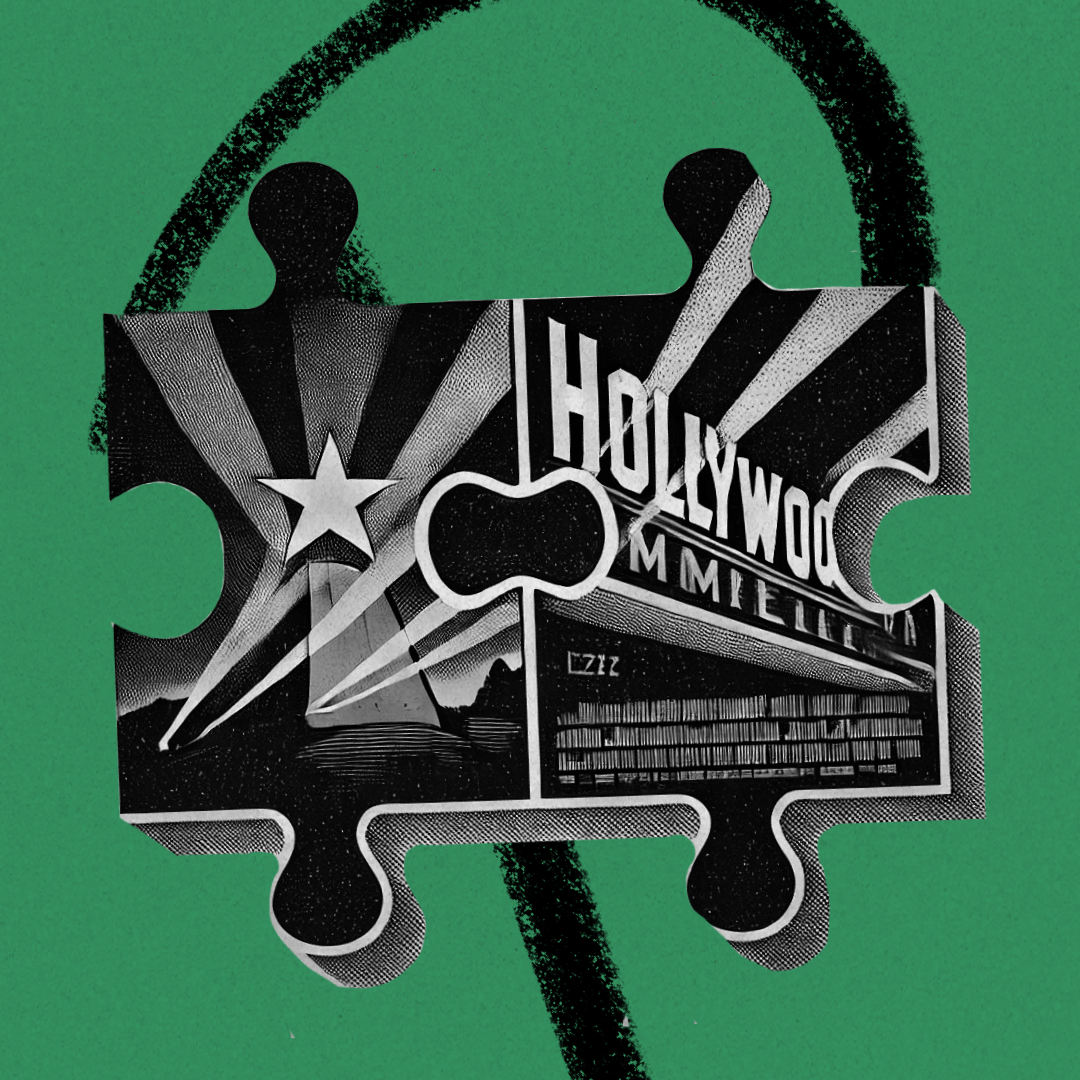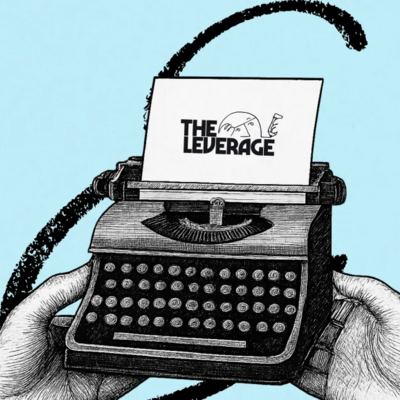
Was this newsletter forwarded to you? Sign up to get it in your inbox.
In 1916, Adolph Zukor combined his movie production studio Famous Player Film Company with Paramount Pictures, a leading film distributor. Zukor, a Hungarian Jewish immigrant, was a fur merchant-turned-budding-movie magnate who followed up his purchase with a 1919 acquisition of 135 theaters.
The five-foot-five Zukor was the first truly American entertainment mogul. By consolidating the three crucial components of the movie industry—a studio, distributor, and theater (exhibitor)—he controlled an entire segment of the industry. Not to mention that actors were under contract with studios in those days.
From the famous Paramount lots in Los Angeles to movie theaters across America where consumers congregated by the millions, Zukor held the leverage to repress wages of creative talent and produce enormous revenues. He intuited the lesson that would drive the next 100 years of entertainment success: If you own the distribution, you own the profit.
Paramount’s business was so dominant that the U.S. Federal Trade Commission (FTC) would hound Zukor for nearly 20 years, until finally, in 1948, the Supreme Court ruled in the government’s favor over Paramount, forcing studios to divest from their theaters. The so-called “Paramount Decrees” changed the shape of the business and effectively ended the studio system.
Now, slightly over 100 years later, Paramount is an unrecognizable, unprofitable descendant to that dominant Hollywood megacorporation of yore, but it is, once again, being acquired by a content producer. On July 7, the production company Skydance Media announced a merger with Paramount in a rather complicated transaction that will inject $8 billion into the legacy media business while bringing more production in house. Six billion dollars of that funding will come from the Skydance founder’s father, Larry Ellison, and $2 billion will come from RedBird Capital, a private equity firm. When coupled with the fact that the Paramount Decree was sunsetted in 2022—Sony was the first to take advantage by acquiring the movie theater chain Alamo Drafthouse earlier this year—it should, historically speaking, mean that profits are on the way up again.
This is not going to happen. Paramount failed because the ownership learned the wrong lesson from the company’s history. When Shari Redstone, the former chairwoman of Paramount and daughter of the man who had run Paramount since 1994, Sumner Redstone, sent an email to Paramount announcing the deal had gone through, she argued, “While people often debated whether content or distribution ruled the day, my father was governed in all of his decisions by his belief that content was indeed king. That has never been more important than it is today, when in a cluttered marketplace, we continue to create content that resonates with our consumers.”
While a noble sentiment, this is wholly incorrect. Content can only briefly be king. In the long term, distribution advantages enable you to get paid for both your shitty content as well as your hits. Content-first companies are only as good as their next amazing product. Ellison does recognize this dynamic. In a podcast interview he conducted after the deal was announced, he said, “We live in a world where an A- is failing. You have to have a creative culture that believes quality is the best business plan.” This is a noble sentiment and theoretically possible, but it is much harder to produce A+ quality content for years than simply owning the distribution during that time.
The original Paramount knew this. For nearly 100 years, it rode each technological wave by capturing unique, defensible distribution.
The embrace of new technology
The 20th century saw four major entertainment distribution and technological shifts: feature films, radio, television, and the internet. Each of the first three of these evolutions had hard constraints on the amount of distribution available.
Movies could initially only be shown in theaters. Paramount took advantage by engaging in a practice called block booking, which involved studios selling their films to theaters in packages—or blocks—rather than individually. Theaters were required to purchase a bundle of movies, often containing both high-quality, major motion pictures (A movies) and lesser-quality, lower-budget films (B movies). Radio had only a limited availability of airwaves and incurred high capital costs for broadcasting equipment. Paramount took a 49 percent stake in CBS in 1929 but, because of the Great Depression, it had to liquidate its position. (I still think Zukor deserves credit for this savvy move.)
In television there were—initially, at least—few channels and high startup costs. While other movie executives in Hollywood were bemoaning how TV would be the end, Zukov argued, “Rather than lose the public because television is here, wouldn't it be smart to adopt television as our instrument?” To do this, Paramount grabbed distribution with an experimental local TV channel in 1939, bought a stake in a TV manufacturer in 1938, and launched its own TV network in 1948.
While the technology always looked different, the strategy remained the same: Spend money to own a limited number of distribution channels.
The internet was wholly different. It simultaneously featured unlimited distribution—where you could broadcast your content to anyone in the world—and universal competition, where you were competing not just with other entertainment options, but with everything else.
Think of late-night TV. From the 1950s to the 1990s, when parents tucked their children into bed, they relaxed together and watched The Tonight Show on NBC. Nowadays, every high-performing professional I know is spending those evening hours answering emails. Beyond being a capitalist war crime on our personal time by employers that is likely making Karl Marx spin in his urn, the broader attention economy—both TikTok and Slack—represents a new and deadly form of competition for Paramount.
You likely know the rest of the story: Netflix built distribution advantages, while Facebook, Google, and other aggregators of consumer attention built dominant businesses by making companies like Paramount into commodity content suppliers.
This history lesson shows why Paramount has struggled so mightily—it had to unlearn lessons 100 years in the making. There are no distribution limits that are native to the internet.
In the past 10 years, Paramount has sold off multiple media assets in various states of decline. It shed its radio assets in 2017 and has been undergoing the slow diminishment of its linear TV business ever since. It failed to sell cable mainstay BET last year while Paramount+, its Netflix competitor launched in 2014, has reached 71 million subscribers—and has lost billions in the process. (Disney Plus, which was launched in 2019, has 149 million subscribers.)
The task for Paramount’s executives had to be to draw as much excess cash as possible from linear TV assets to pivot their existing IP into the new age of distribution. In that goal, Paramount has failed. As I’ve previously argued, most of that failure came from a culture of stupidity, ignorance, and even sexual abuse cultivated among top executives. They needed a savior—they got Skydance and its partner RedBird Capital.
The state of Paramount and Skydance
Skydance’s founder, David Ellison, calls his firm a “pure-play content company” that has guided movie franchises such as Top Gun: Maverick and Star Trek. Since Skydance is private, the economic details are murky, but reports have pegged it as profitable and valued in the transaction at $4.75 billion. At the same time, Skydance and Redbird Capital will invest around $8 billion into Paramount. They’ll be using the capital in two ways:
- Pay down debts: The firm will cut $2 billion in Paramount’s linear TV division while paying down debt to reduce its interest payments.
- Fix Paramount+: It will invest in new advertising technology and “partnerships in a rapidly changing environment”—aka bundling with other direct-to-consumer entertainment offerings—while looking to improve the recommendation algorithm.
Ellison wants to make Paramount into a “tech hybrid” company, so, of course, the deck reviewing the deal for shareholders includes three mentions of generative AI. Since the newly merged Paramount does not train models nor have any substantive AI products—and this strategy was delivered via a PowerPoint surely prepared by overpaid management consultants—I will henceforth ignore that as corporate gobbledygook. Calling Paramount a tech hybrid because it will use other companies’ AI and adtech is like calling me a gorilla hybrid because I enjoy the taste of bananas.
In reality, this is a bet on David Ellison and a bet on money. I see nothing fundamentally new in this strategy beyond “Hollywood content but bigger and smarter capital allocation.” That could be a good bet! But it is not a bet on innovation in distribution.
To be fair to the Paramount leadership team, every media company has faced the same headwinds, and none have navigated them without hiccups. Articulating media’s distribution problems is much easier than solving them.
If you don’t have distribution (i.e., if you aren’t a tech platform or Netflix), the best bet has historically been to utilize narrative network effects by owning the rights to popular franchises. Then, you use that IP in as many ways as possible. Disney got it first with the purchases of Marvel and LucasArts of Star Wars fame, but Warner is doing similar things with Harry Potter and DC Comics movies.
Paramount is planning on using a nearly identical strategy with Skydance. The companies were closely aligned, having partnered on “nearly 30 productions,” including large franchises such as Transformers and Mission: Impossible.
If Ellison just does what he says, there is a narrow chance the company can succeed. However, the options for thriving—for building an incredible, multi-decade-return-producing machine—is something else entirely.
Content producers have built enterprise value without owning unique distribution channels. A24, of Everything Everywhere All At Once fame, just raised $75 million from Thrive Capital at a $3.5 billion valuation. MSCHF, which I profiled a few weeks ago, has been able to scale its taste to internet acclaim. The best-known example is probably Pixar, which was able to build its storytelling skills into an inflation-adjusted $11.5 billion sale to Disney in 2006.
However, Paramount is being bought at around a $28 billion valuation, which, when coupled with Skydance’s $4.5 billion or so, yields an approximately $34 billion valuation. Typically, a low-growth private equity-esque investment such as Paramount would be expected to generate returns of 3-5x for its investors. A 5x return would mean Paramount would end up being valued the same as Disney is today, at roughly $170 billion. To reach those soaring heights, you’ll need a lot more than a simple rework of Paramount+.
There has never, ever, in the history of media, been a company to reach that size without some kind of distribution engine. Even if Paramount had been permitted to keep its studio system through the present day, the internet would render it moot. The attention economy is simply too ferocious. It also appears that Ellison is focused on the wrong side of the equation. In his podcast appearance, he said, “First and foremost, Paramount is a content company and will continue to be a content company.” Perhaps the plan is to bleed linear TV dry and issue as many dividends as they can out of the thing before selling the entire thing off for parts. Or maybe I’m being an AI scrooge, and Paramount will actually be able to deliver.
Regardless, this transaction is not the acquisition of a sterling asset. It is a life raft, thrown to a company that has been slowly drowning for more than 20 years.
Evan Armstrong is the lead writer for Every, where he writes the Napkin Math column. You can follow him on X at @itsurboyevan and on LinkedIn, and Every on X at @every and on LinkedIn.
The Only Subscription
You Need to
Stay at the
Edge of AI
The essential toolkit for those shaping the future
"This might be the best value you
can get from an AI subscription."
- Jay S.
Join 100,000+ leaders, builders, and innovators

Email address
Already have an account? Sign in
What is included in a subscription?
Daily insights from AI pioneers + early access to powerful AI tools









Comments
Don't have an account? Sign up!
Loved this article. My enjoyment was probably further enhanced by my ungodly Succession binge over the last two days (currently on season 3).